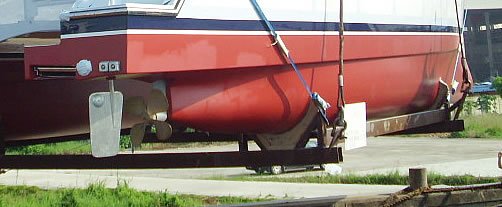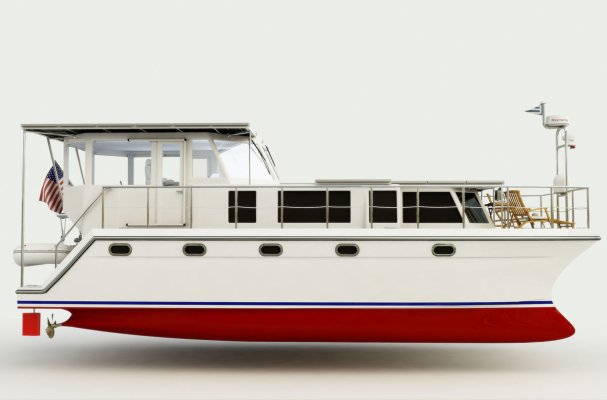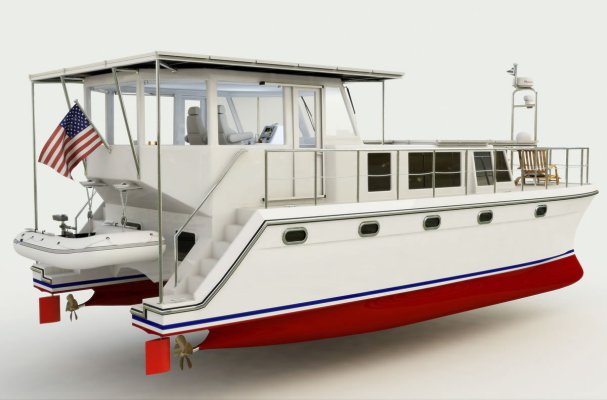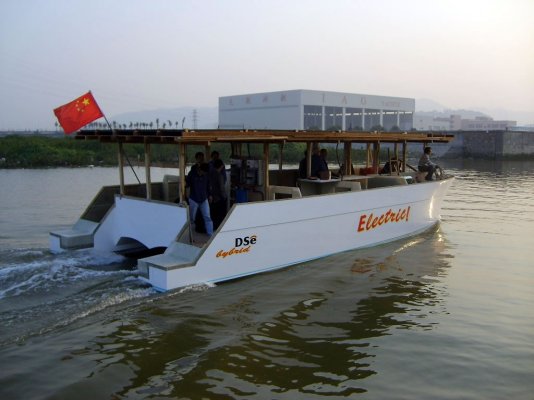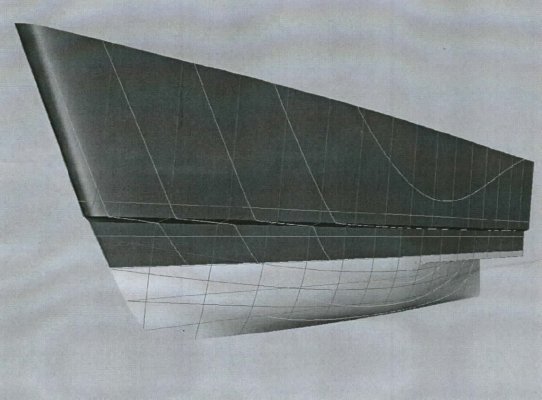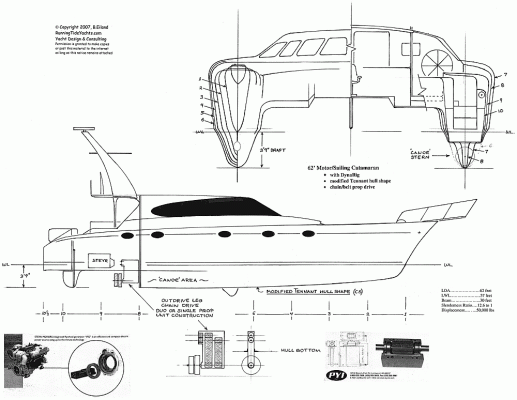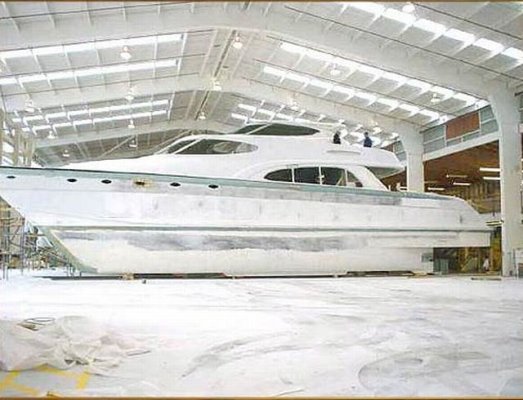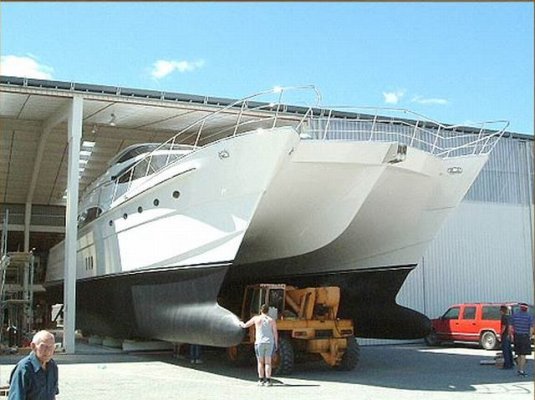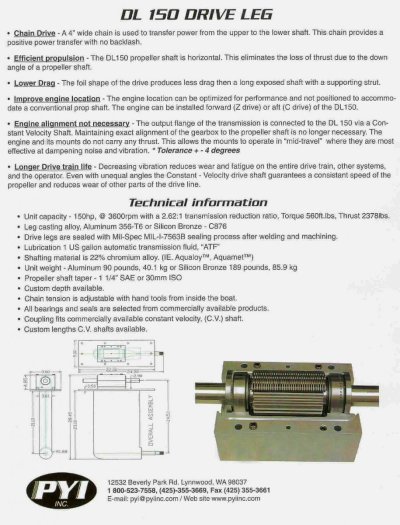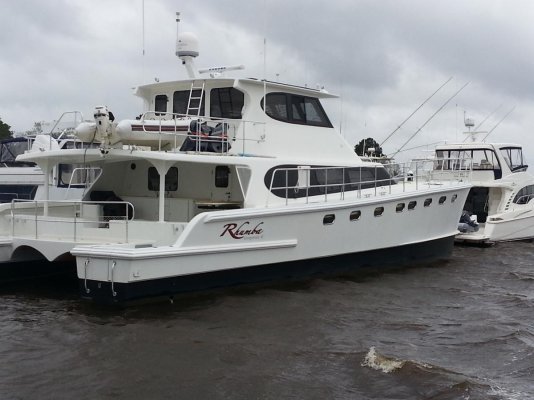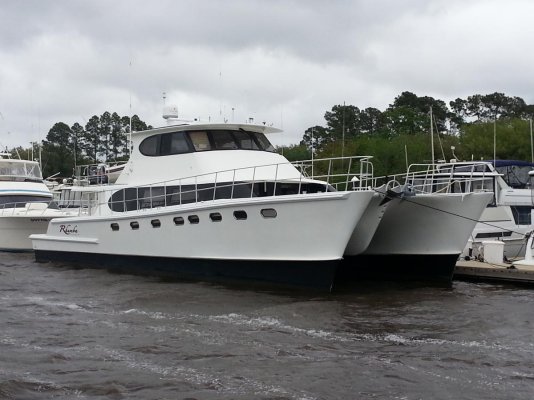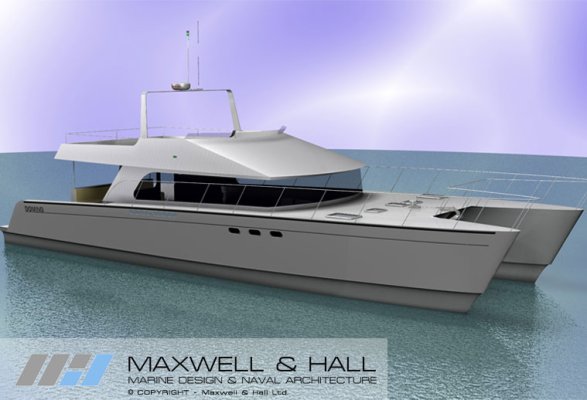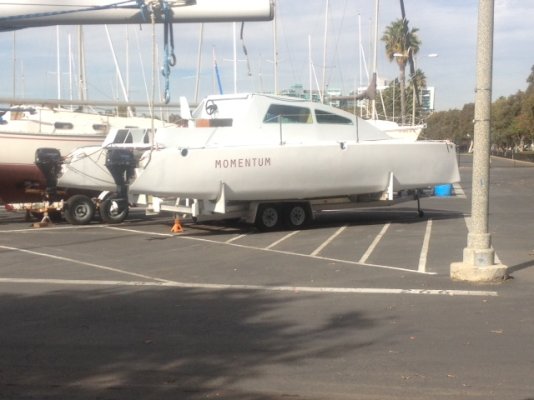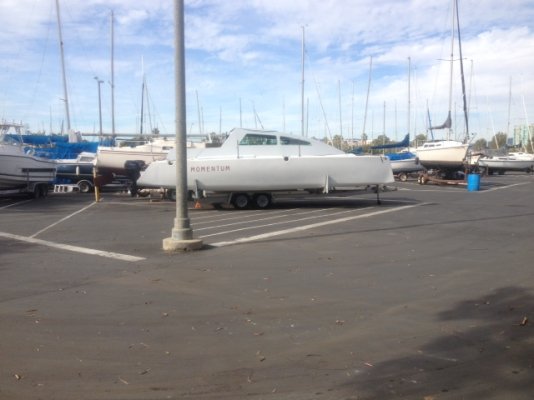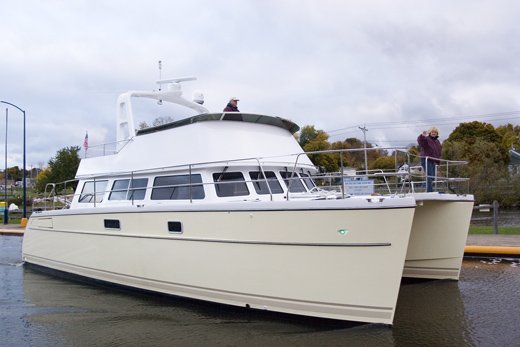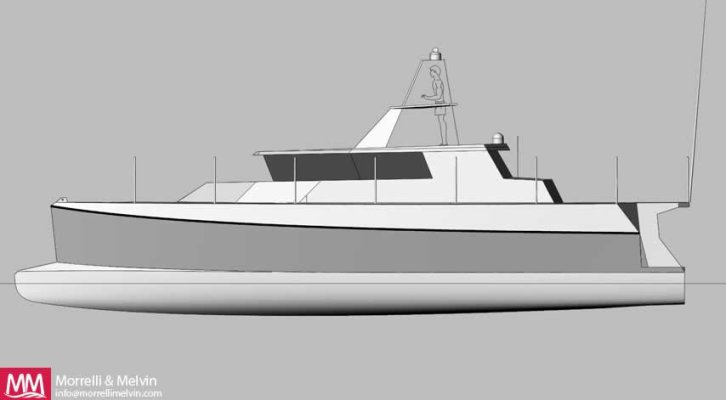rjtrane
Senior Member
- Joined
- Apr 8, 2013
- Messages
- 268
- Location
- USA
- Vessel Name
- Sunshine
- Vessel Make
- Island Pilot DSe 12m Hybrid
DSe Sunshine's Aft Sections
Parmenter -
Here are two CGI images of Sunshine with her "as-designed" aft sections (ignore the size of props and rudders - the artist missed a bit on both - but the lines are a good reflection on the design). We used semi-circular sections leading aft from wave-piercing bow then tapered conically to the propeller aperture (not unlike a torpedo). At the point where we start this taper, the chine continues aft with a flat section to the trailing edge of the transoms.
Even though this image shows bottom paint on these flat sections, they were intended to be above the waterline at slower, displacement speeds - immersing into the water only at higher speeds. Initial sea trials in Zhuhai showed this to be the case as were tank tests in Shanghai. The photo of sea trials shows a bit of immersion aft at displacement speed.
We did not install enough power originally to get much beyond 9 knots - power was serial hybrid from Glacier Bay, each motor measuring maximum of 18 kW (instead of the advertised 25 kW).
We ended up installing parallel hybrid with ZF sail drive from Steyr 75 HP diesels/7 kW electric motors. We needed to reconfigure the trailing section of the bottom to accommodate these legs - not as pretty as original concept. Also, we ended up adding significant weight (diesels aft along with lots of wood and structure), so the flat sections aft were immersed along with the chine and some "ugly" sections above the chine. Top speed with these diesels remained at 9 knots.
I have also attached an "as built" photo showing the aft sections as modified for the sail drive leg. My guess is that this treatment is not unlike the aft sections of other displacement power cats - the flat sections are now well immersed (as indicated by the bottom paint). If we had more HP, I'm sure we'd break the 9 knot barrier and reach speeds in the low teens - unfortunately, our decision to use sail drive precludes more HP as they are limited.
Parmenter -
Here are two CGI images of Sunshine with her "as-designed" aft sections (ignore the size of props and rudders - the artist missed a bit on both - but the lines are a good reflection on the design). We used semi-circular sections leading aft from wave-piercing bow then tapered conically to the propeller aperture (not unlike a torpedo). At the point where we start this taper, the chine continues aft with a flat section to the trailing edge of the transoms.
Even though this image shows bottom paint on these flat sections, they were intended to be above the waterline at slower, displacement speeds - immersing into the water only at higher speeds. Initial sea trials in Zhuhai showed this to be the case as were tank tests in Shanghai. The photo of sea trials shows a bit of immersion aft at displacement speed.
We did not install enough power originally to get much beyond 9 knots - power was serial hybrid from Glacier Bay, each motor measuring maximum of 18 kW (instead of the advertised 25 kW).
We ended up installing parallel hybrid with ZF sail drive from Steyr 75 HP diesels/7 kW electric motors. We needed to reconfigure the trailing section of the bottom to accommodate these legs - not as pretty as original concept. Also, we ended up adding significant weight (diesels aft along with lots of wood and structure), so the flat sections aft were immersed along with the chine and some "ugly" sections above the chine. Top speed with these diesels remained at 9 knots.
I have also attached an "as built" photo showing the aft sections as modified for the sail drive leg. My guess is that this treatment is not unlike the aft sections of other displacement power cats - the flat sections are now well immersed (as indicated by the bottom paint). If we had more HP, I'm sure we'd break the 9 knot barrier and reach speeds in the low teens - unfortunately, our decision to use sail drive precludes more HP as they are limited.

